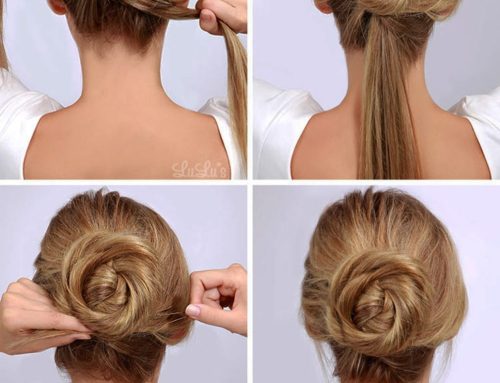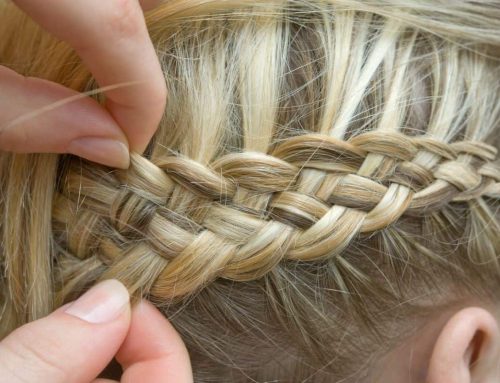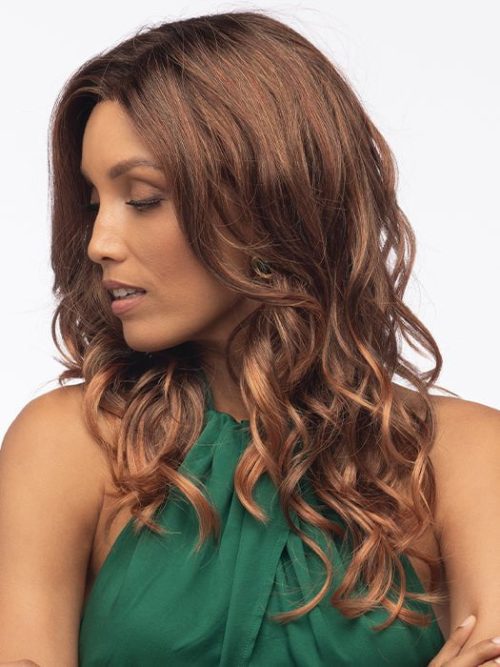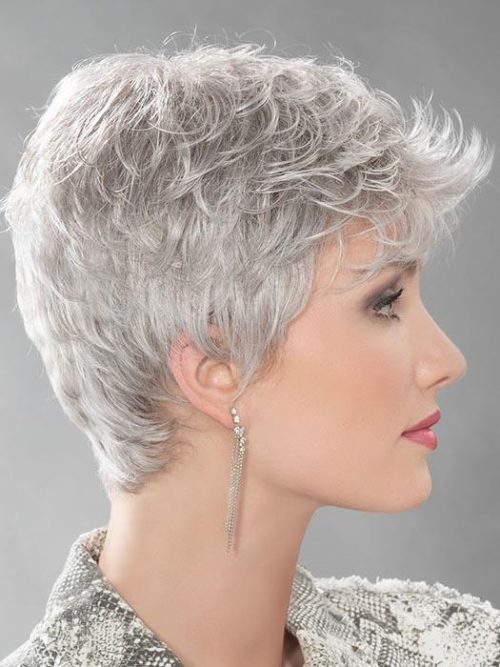Have you ever thought about wearing a wig? Trust me, wigs aren’t just about looking good. They can boost your confidence, help you follow your faith, or make you feel comfortable during tough times like cancer treatments. I’ve been wearing wigs for a while now, and they’ve really made a difference in my life. So, let’s dive into how to pick the perfect wig for you!
Selecting the Perfect Wig
Step 1: Synthetic or Human Hair?
First things first, you need to decide between a synthetic wig or a human hair wig. Here’s the deal:
- Synthetic Wigs: These are fantastic for holding styles, especially if you like short, voluminous looks. They’re often called “shake-n-go” wigs because you can just shake them out and pop them on. Easy peasy!
- Human Hair Wigs: These are super versatile. You can style them any way you want – ponytails, buns, curls, waves – you name it. They last longer than synthetic wigs but need a bit more care.
A close friend of mine who went through chemotherapy preferred synthetic wigs because they were more affordable and easy to manage. You can expect to pay anywhere from $50 to $500 for a synthetic wig and $600 to $4,000 for a human hair wig, depending on the length and quality.
Step 2: Think About Your Lifestyle
Your daily routine plays a big role in picking the right wig. Do you want something quick and easy to style, or are you okay spending more time on your hair? If you’re active, like going to the gym or running, you’ll want a wig that stays put and is comfortable. Also, think about the length. If you’re not sure, measure from the top of the wig down to the longest strand to see what feels right.
Step 3: Face Shape Matters
Your face shape can really influence which wig styles look best on you:
- Round Faces: Go for short, spiky pixies, or long layers that hit at the jawline.
- Heart-Shaped Faces: Try a tousled pixie cut, shoulder-length with side-swept bangs, or long layers with a fringe.
- Oval Faces: Shaggy bobs and layered curls or waves can add volume and fullness.
- Square Faces: Soften your jawline with a longer, angled bob or soft layers.
Step 4: Match Your Skin Tone
Picking the right color is super important. Here’s a quick guide:
- Warm Skin Tones: Look great with honey blondes, chestnut browns, and copper reds.
- Cool Skin Tones: Shine with platinum blondes, ash browns, and raven blacks.
- Neutral Skin Tones: Can usually pull off most colors, so have fun with it!
Fitting the Wig to Your Head
Step 1: Visit a Wig Store
Once you’ve decided on the type of wig, it’s time to shop. Visiting a wig store is the best way to try on different styles and see what fits. If you’re a cancer patient, check with your insurance—they might cover the cost. Organizations like the Breast Cancer Society also provide free wigs.
Step 2: Measure Your Head
Knowing your head size is important for a comfy fit. Wrap a cloth measuring tape around your head, starting at your forehead, going down to the base of your skull, and back up. The average head circumference is about 22 inches.
Step 3: Try It On
Trying on the wig is key. It should fit snugly without irritating your scalp. Many wigs come with adjustable tabs to fine-tune the fit. Some even have double-sided tape or clips to keep them secure. If you’re bald, consider wearing a skull cap for comfort.
Step 4: Use the Adjustable Band
Worried about your wig slipping? Many wigs come with adjustable bands. You can also use cushion bands or wig grippers for extra security. These accessories create friction that keeps the wig in place, making it more comfortable.
Caring for Your Wig
Step 1: Protect from Heat
Heat is a wig’s worst enemy. Avoid exposing your wig to high heat from ovens or stovetops. Never use hair dryers or curling irons on synthetic wigs, as it can damage the fibers. When cooking, consider wearing a hat or turban to protect your wig.
Step 2: Washing a Human Hair Wig
Human hair wigs need a bit more TLC:
- Brush First: Gently brush the wig to remove tangles.
- Wash: Turn the wig inside out and wash it with mild shampoo in cold water.
- Condition: Apply conditioner, let it sit, then rinse.
- Dry: Pat the wig dry with a towel and let it air dry on a wig stand. Never brush it while wet.
Step 3: Washing a Synthetic Wig
For synthetic wigs, use wig-specific shampoo and conditioner:
- Brush: Remove tangles first.
- Wash: Submerge the wig in cold water with synthetic wig shampoo.
- Rinse: Rinse thoroughly and condition.
- Dry: Pat dry with a towel and let it air dry. Avoid direct sunlight and never use heat.
Step 4: Daily Care
Brush your wig daily with a wig brush to keep it looking fresh. Start from the ends and work your way up to prevent tangling. A leave-in conditioner spray can help with stubborn knots.
Step 5: Nighttime Protection
Wearing a satin cap at night can prevent tangles. If caps aren’t your thing, a satin pillowcase works too. This little step keeps your wig smooth and ready for the next day.
Personal Story: My First Wig Experience
Let me tell you about my first wig experience. I was nervous and excited. I remember walking into the wig store, feeling a bit overwhelmed by all the choices. But then, I saw it—a beautiful auburn wig that looked just like my natural hair before I started losing it. When I put it on, I felt like myself again. It fit perfectly, and I almost cried from happiness. That wig gave me the confidence to face the world with a smile.
Conclusion: Embrace Your Wig Journey
Choosing and caring for a wig can seem overwhelming at first, but it’s all about finding what works best for you. Whether you’re new to wigs or a seasoned pro, the right wig can make you feel fabulous. So go ahead, explore different styles, and enjoy the confidence boost that comes with wearing a beautiful wig.




